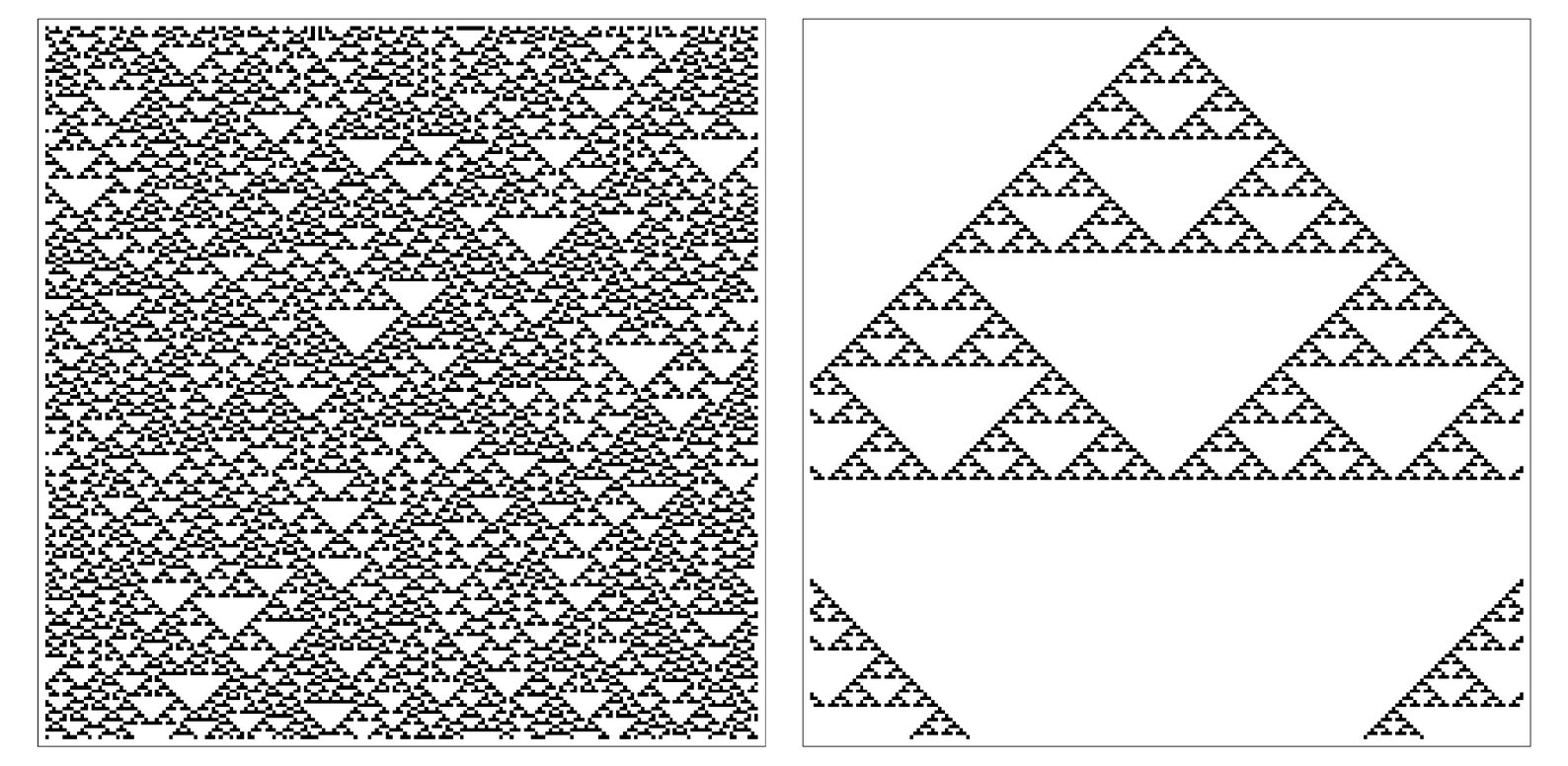The behavior we see in the two cases rapidly becomes almost indistinguishable. In the first picture the random initial conditions certainly affect the detailed pattern that is obtained. But the crucial point is that even without any initial randomness much of what we see in the second picture still looks like typical random class 3 behavior.
So what about other class 3 cellular automata? Do such systems always produce randomness even with simple initial conditions?
The pictures below show an example in which random class 3 behavior is obtained when the initial conditions are random, but where the pattern produced by starting with a single black cell has just a simple nested form.
Nevertheless, the pictures on the facing page demonstrate that if one uses initial conditions that are slightly different—though still simple—then one can still see randomness in the behavior of this particular cellular automaton.

Patterns produced by the rule 22 cellular automaton starting from random initial conditions and from an initial condition containing a single black cell. With random initial conditions typical class 3 behavior is seen. But with the specific initial condition shown on the right, a simple nested pattern is produced.